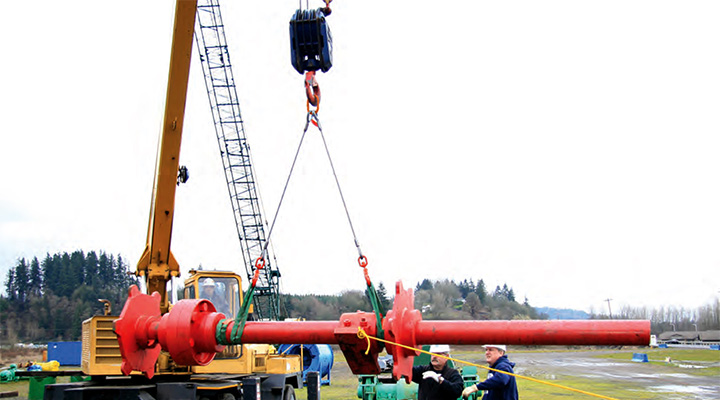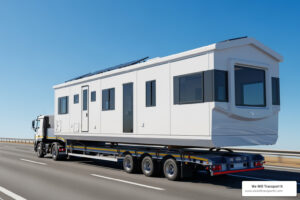[templatera id=”65638″]
What is Lifting and Rigging?
are a 5 Star experts Rigging and Lifting Heavy Equipment and Rigging Oversize Loads to any sate of the country and overseas. When transporting large industrial equipment, building materials, and palleted freight, you frequently need to move several tons simultaneously. It’s essential to use vehicles and trailers with sufficient payload capacity and secure everything before you get on the road. We Will Transport It offers trusted industrial rigging transport services at guaranteed low prices, and we have a team of experts who can help you with rigging oversize loads and securely transporting them to the job site.
Contact us online to learn more about rigging and lifting heavy equipment, and dial 1-800-677-1196 to schedule 5-star rigging and machinery moving services!
Lifting & Rigging Equipment
When you’re scheduling industrial rigging transport services, you’ll need to let us know what type of machinery or freight you need to move so we can give you an accurate estimate. It’s also helpful to understand some basic rigging and machinery moving terminology. Lifting equipment includes forklifts, boom lifts, and scissor lifts used to move personnel or materials around a job site. Rigging is used to move heavy materials or secure them into place during construction. Here’s an introduction to the most widely used lifting & rigging equipment:
-
Shackles
Shackles come in two different types, and they’re commonly used in rigging and machinery moving. They’re curved, load-bearing connecting devices connected with a bolt or a threaded pin. The bent part of the shackle is known as the “bow,” and a pin or a bolt is connected through the shackle’s “shoulders.” Anchor shackles are also known as “bow” shackles because of their rounded shape, and the bow on chain shackles is D-shaped. Chain shackles can be used as load-bearing connectors, but you’ll want to use anchor shackles if you plan on doing any side pulling.
-
Capstan hoists
Winches are commonly used lifting & rigging equipment, and capstans are a great way to get additional leverage when pulling a rope, cable, or chain. The key distinction is that a capstan is a powered drum-shaped device that assists in pulling the cable or chain without rolling it onto a drum. A winch is ideal if you need to lift or pull freight or machinery in one direction, and a capstan hoist enables you to gain additional mechanical advantage. We’ll be discussing mechanical advantage in more detail in an upcoming section.
Pulling Rope
Pulling rope is used with cable pullers as a heavy-duty alternative to fish or pull tape for commercial and industrial cable installation. The rope is constructed from twisted polypropylene twine or double-braided polyester composite rope designed to be durable and friction-resistant. Fish tape and pull tape are suitable for routing wires through drywall and electrical conduits, but you’ll want to use heavy-duty pulling rope for multi-cable installation.
-
Double-braid rope
Double-braid ropes are essential for lifting and rigging oversize loads because they’re two ropes in one. A double-braid rope has a single-braided rope inside another single-braided rope that combines to form a strong, flexible, and easily spliced rope. Using double-braided ropes with rigging and lifting heavy equipment enables you to distribute the weight of your load between the rope’s core and skin. Double-braid rope is also known as “2-in-1 rope” and “yacht braid rope.”
-
Rope care
You should always take good care of rigging and lifting heavy equipment, and the rope is no exception. A quality rope is strong, durable, and has a shelf life of up to ten years, but it will wear out more quickly in extreme heat and after prolonged salt and dirt exposure. Try to avoid dragging ropes across rough or dirty services, and wash them in fresh water at least monthly. Keep your ropes away from chemicals and store them out of direct sunlight in a place that’s clean and dry.
-
Rope inspection
You should perform a visual rope inspection at the beginning and end of each day and replace ropes as soon as they show signs of excessive wear. Measure the groove diameters in the rigging and lifting heavy equipment gears and rope drives and inspect the areas that put the most stress and strain on your ropes. You should measure the ropes’ diameter with a suitable tool quarterly or monthly, depending on its frequency of use. You should also look for fraying and corrosion and evaluate the amount of lubricant on the rope’s outer surfaces.
-
Inspection log
Your inspection log enables you to document rope inspections, usage, and wash cycles. All rigging and machinery moving operations depend on the integrity of ropes and cables. Be sure to review all OSHA regulations to determine when it’s time to retire ropes, and you should always err on the side of caution. Keep your inspection log in a conspicuous location and review it as frequently as necessary.
Haul Systems
Haul systems use pulleys and other rigging and lifting heavy equipment to make heavy loads easier to lift. Pulleys are commonly used in block and tackle systems to change the direction of rope and increase the user’s mechanical advantage.
Mechanical advantage | Rigging oversize loads
Pulleys are simple machines used to decrease the force required to lift a heavy object by changing the rope’s direction. Each time you add a movable pulley to lifting & rigging equipment, it’s like adding another rope.

You’ll have to use more rope and pull it a greater distance, but the tradeoff is that it will require much less strength to lift the object. You can calculate mechanical advantage using the formula MA=2n, with n representing the movable pulleys in your block and tackle system. You can also use the formula MA=m, with m representing the number of rope sections in your lifting & rigging equipment that support movable pulleys.
Snatch Blocks
Winches and other lifting & rigging equipment can be used for pulling and rigging oversize loads, and snatch blocks are a great way to increase their overall pulling or lifting capacity. Snatch blocks are heavy-duty pulleys in a metal casing, and they enable you to change a cable’s direction by offsetting the anchor point. Snatch blocks are commonly used for rigging and machinery moving, and they’re particularly useful for lifting and transferring heavy loads short distances.
Slings
Slings come in handy when rigging and lifting heavy equipment because they enable you to lift delicate or oddly-shaped loads safely. They’re commonly used for lifting and rigging oversize loads such as pipes and building materials. Slings are made from chains, ropes, or webbing, and they come in different sizes. Chain slings are used in construction and demolition to handle oddly-shaped loads and materials, and web slings offer more balance and stability when lifting bulky objects with difficult-to-locate lifting points. Wire mesh slings work like web slings for lifting and moving hot, abrasive, or hazardous materials.
FAQ
-
How to ship industrial rigging?
We offer custom industrial rigging transport services and multiple transportation modes. We can use cranes and jacks for rigging and lifting heavy equipment onto specialty flatbed trailers or into shipping containers. We also offer step-deck, low-boy, and removable gooseneck (RGN) for oversized loads. If you’re shipping oversized rigging or machinery overseas and it doesn’t fit into a standard or high cube container, we can also help you schedule flat rack or roll-on, roll-off (RORO) deck transport to most worldwide ports.
-
What’s the purpose of lifting and rigging equipment?
All lifting & rigging equipment is designed to move heavy machinery and freight safely. The main difference is that lifting machinery uses a platform supported by an extension to move people and objects and rigging equipment is used on a job site to lift, move, and place building materials. Standard lifting equipment includes forklifts and scissor lifts, and common rigging equipment includes ropes, cables, and pulleys. Be sure that you always use the right equipment for each task, and remember that job site safety is everyone’s responsibility.
-
What are the three types of rigging?
Industrial rigging transport services use three basic hitches when they’re rigging oversize loads. The straight-leg vertical hitch is the most basic hitch, and you can simply connect the object to the sling’s lower end fitting. The choker hitch is a convenient way to lift an object with a difficult-to-locate lift point. To make a choker hitch, run the sling around the object and pass the upper end fitting through the sling’s loop or lower end fitting. You can double your mechanical advantage using the basket hitch. To make a basket hitch, pass the sling around the object and connect both end fittings to your winch. Be sure to visually inspect your slings before use and confirm that all rigging are secure before pulling or lifting your object.
-
What are the two types of rigging?
If you’re “learning the ropes” on a boat, you’ll need to start by learning the two classes of rigging. Standing rigging supports a ship’s mast and bowsprits, and running rigging controls sail orientation. Rigging configurations vary by vessel type: square-rigged vessels have horizontal spars perpendicular to the mast and keel, and fore-and-aft rigged ships typically have a forestay, a backstay, and multiple side stays.
Get an Instant Estimate for Industrial Rigging Transport Services Today!
Transporting oversized industrial machinery and materials is easy when you have the right equipment and expertise! Our rigging and machinery moving experts at We Will Transport It are available around the clock when you need help rigging oversize loads or hauling heavy equipment. Contact our rigging and machinery moving experts on our website to learn more, or dial 1-800-677-1196 to save 10% or more on industrial rigging transport services!
Suggested Important Links
- Shipping Container Crane
- Cheap Way to Ship Heavy Items
- Scissor Lifts Transport Company in Town
- Trailers Hauling
- Transport Water Tanks With The Professionals





